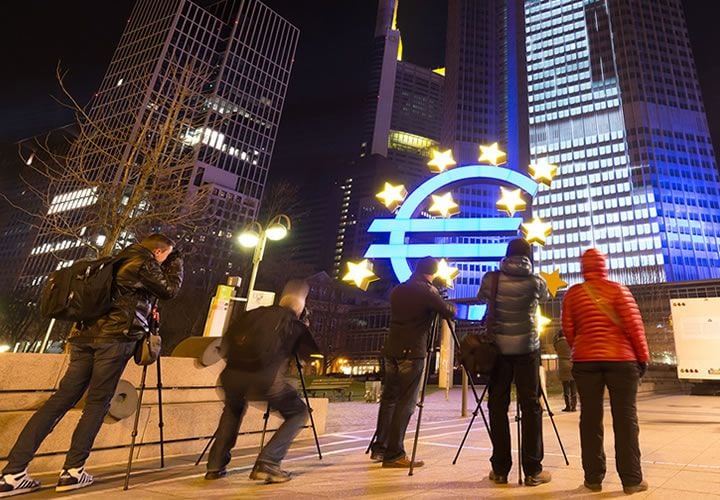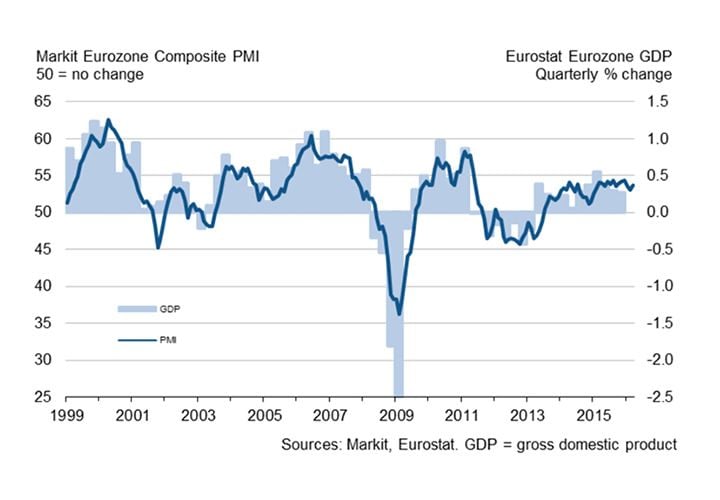Euro Exchange Rates Remain Under Pressure But 1.17 'Range Highs' Still Targeted by Lloyds

The euro remains in control against the British pound as the UK currency continues to absorb heavy risk discounting ahead of the EU referendum which is now three months away.
There are however suggestions that the pound's sell-off agianst the euro is potentially overdone at this stage and that the euro should at some point start to absorb some of its own Brexit-inspired risk premium.
The euro remains under pressure in the near-term against the dollar as the market continues to re-price the risk of a US rate hike.
The dollar strengthened yesterday as US Fed Member Bullard indicated yesterday that there may be a case for raising interest rates as early as April, given the possibility of overshooting inflation and unemployment targets.
This added to recent hawkish comments from Fed Members Williams, Lockhart, and Evans.
"Having broken below support at 1.1180, should current conditions prevail, the pair is likely to gravitate towards 1.1060/40," says Robin Wilkins at Lloyds Bank.
1.1060 and 1.1040 are seen as congestion areas as the 50 day and 200 day moving averages are located here. Moving averages have the habit of halting moves in currency markets as they are typically laden with buy and sell orders.
On an intra-day move, this is likely to provide strong support.
To the topside, intra-day resistance is at 1.1235/55, with 1.1375/1.1465 the key level to watch.
"Longer term, the risk for the market is that EURUSD trades back towards and above 1.1375/1.1465, opening up range highs at 1.17, and potentially 1.20 – 1.23," says Wilkins.
The analyst believes a break of 1.1060/40 would provide a bearish bias for a test of important support at 1.0825/20, with a move through there opening up range lows.
Eurozone Data Supportive of a Higher Currency
The EUR/USD exchange rate rose nine points from 1.1195 to 1.1204 over the five minutes following the release of Eurozone Manufacturing and Services PMI data on Tuesday.
This is a key data point for the shared currency as it tracks business activity in the two sectors across the Eurozone.
That it showed a higher-than-expected rise in March bodes well for the shared currency on a fundamental basis.
The first estimate for Eurozone Manufacturing PMI rose to 51.4 from 51.2 previously, when an increase to 51.3 had been forecast; for Services PMI, the rise was to 54.0 from 53.3 (no-change expected).
The Markit Eurozone Composite Index, which combines all PMI measures, rose from 53.0 in February to 53.7 in March and was a “welcome reversal after the declines seen in the last two months,” according to the accompanying statement.

The Services PMI result showed the index rebounded to a three-month high, whilst Manufacturing came out at a two-month high.
The report said that the figures showed that the, “Eurozone economy gained some momentum in March.”
The report further went on to say that the uplift was led by Services which recovered from a 13-month nadir reached in the previous month.
Manufacturing was seen as lagging although New Orders and Output rose from 12 and 10 month troughs respectively.
On the negative front:
“Employment showed the smallest monthly increase since last September and backlogs of work, a key gauge of existing orders that firms have not yet completed, barely rose.”
Producer Price Inflation fell:
“Prices meanwhile continued to fall. Average input costs dropped slightly for a third successive month, helping drive down average prices charged by firms for their goods and services at the second-fastest rate seen for just over a year, the rate of decline easing only marginally compared to February.”
Markits Chief Economist, Chris Williamson, said the PMI’s indicated 0.3% modest growth in GDP for the region in the first quarter of 2016:
“The eurozone saw renewed signs of life at the start of spring. The March PMI showed a welcome end to the worrying slowdown trend seen in the first two months of the year, putting the region on course for a 0.3% expansion of GDP in the first quarter.”
Italian Lender Remains Cautious
UniCredit applauded the recovery in a note after the event, but did not see it as sufficient to alter its outlook:
“To be sure, today’s report, while reassuring on the resilience of the recovery (a message reinforced by the German Ifo), is not bullish across the board. As shown by the decline in export orders, which are now at the lowest level since January 2015, sluggish global trade keeps weighing on the manufacturing sector.”
The lack of job creation was a further concern for the Italian lender:
“Jobs creation in both manufacturing and services has slowed its pace of expansion for the third month in a row.”
They foresaw ECB stimulus as helping to “neutralize” the slow-down but not a “game changer” in itself:
“The just-announced ECB stimulus, while not a game changer for growth, should neutralize some of the downside risks to growth that have emerged since the beginning of the year. But today’s ugly events in Brussels add further uncertainty to the outlook.”









